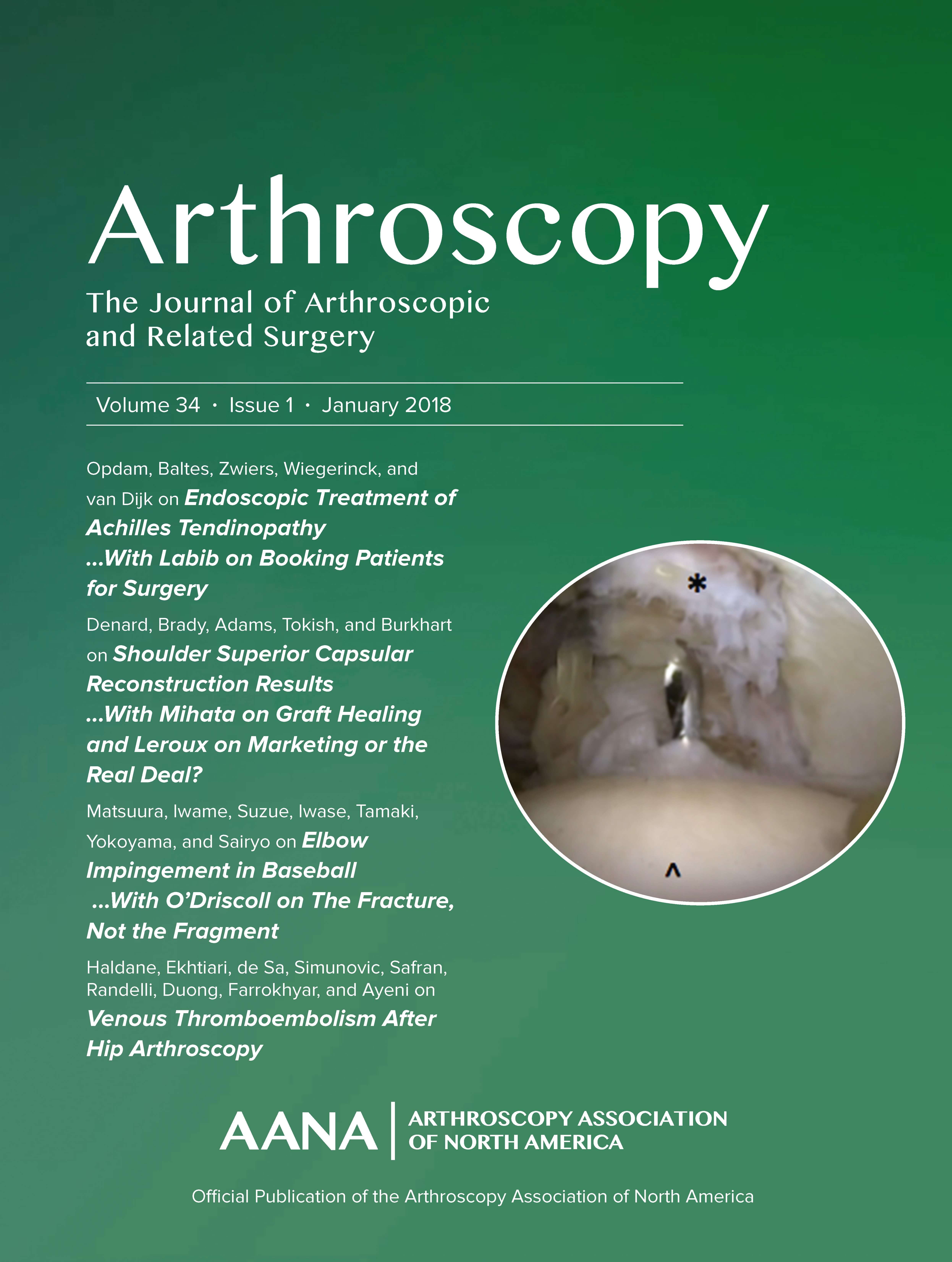
Bankart repair reduces recurrent instability in treatment of anterior shoulder dislocation

Bankart repair reduces recurrent instability in treatment of anterior shoulder dislocation
Anatomic Bankart repair compared with nonoperative treatment and/or arthroscopic lavage for first-time traumatic shoulder dislocation
Arthroscopy. 2012 Apr;28(4):565-75. doi: 10.1016/j.arthro.2011.11.012. Epub 2012 Feb 14Did you know you're eligible to earn 0.5 CME credits for reading this report? Click Here
Synopsis
4 studies (228 patients) were included in this meta-analysis which compared the outcome of anatomic Bankart repair with both arthroscopic lavage and sling immobilization for the treatment of first time anterior shoulder dislocations at a minimum of 2 years. The results indicated that recurrent instability of the shoulder was significantly reduced through the use of anatomic Bankart repair, and quality of life was improved as measured by the Western Ontario Shoulder Instability questionnaire. Patient satisfaction was similar between treatment methods.
Were the search methods used to find evidence (original research) on the primary question or questions stated?
Was the search for evidence reasonably comprehensive?
Were the criteria used for deciding which studies to include in the overview reported?
Was the bias in the selection of studies avoided?
Were the criteria used for assessing the validity of the included studies reported?
Was the validity of all of the studies referred to in the text assessed with use of appropriate criteria (either in selecting the studies for inclusion or in analyzing the studies that were cited)?
Were the methods used to combine the findings of the relevant studies (to reach a conclusion) reported?
Were the findings of the relevant studies combined appropriately relative to the primary question that the overview addresses?
Were the conclusions made by the author or authors supported by the data and or analysis reported in the overview?
How would you rate the scientific quality of this evidence?
Yes = 1
Uncertain = 0.5
Not Relevant = 0
No = 0
The Reporting Criteria Assessment evaluates the transparency with which authors report the methodological and trial characteristics of the trial within the publication. The assessment is divided into five categories which are presented below.
4/4
Introduction
4/4
Accessing Data
4/4
Analysing Data
4/4
Results
3/4
Discussion
Detsky AS, Naylor CD, O'Rourke K, McGeer AJ, L'Abbé KA. J Clin Epidemiol. 1992;45:255-65
The Fragility Index is a tool that aids in the interpretation of significant findings, providing a measure of strength for a result. The Fragility Index represents the number of consecutive events that need to be added to a dichotomous outcome to make the finding no longer significant. A small number represents a weaker finding and a large number represents a stronger finding.
Why was this study needed now?
The recurrence rate following primary anterior shoulder dislocation has been reported to be as high as 67 percent when treated with conservative treatments such as sling immobilization. Two surgical interventions, arthroscopic lavage without concomitant capsuloligamentous repair (the gold standard) and anatomic Bankart repair, may reduce this high recurrence rate. However, the ideal management of first-time shoulder dislocation has not been established due to limitations in the analyses of the current literature. The objective of this publication was to perform a systematic review and meta-analysis which compared the efficacy of anatomic Bankart repair with arthroscopic lavage and sling immobilization in treatment of anterior shoulder dislocation.
What was the principal research question?
Was a lower rate of recurrent instability and improved quality of life achieved in the treatment of anterior shoulder dislocation with the use of anatomic Bankart repair compared to arthroscopic lavage and sling immobilization?
What were the important findings?
- Three different Bankart repair methods were used in the included trials, 1 study used the Caspari technique (transglenoid suture fixation), 1 study used bioabsorbable tacks, and 2 studies used suture anchors.
- Analysis of all 4 trials indicated that recurrent instability was significantly reduced among patients who had received anatomic Bankart repair than those who had received either of the controls (surgical lavage or nonsurgical immobilization). (RR 0.18, 95%CI 0.10-0.33)
- Subgroup analysis indicated that superiority of reduced recurrent instability with anatomic Bankart repair remained when compared separately with arthroscopic lavage (RR 0.14, 95%CI 0.06-0.31) and sling immobilization (RR 0.26, 95%CI 0.10-0.67)
- Quality of life measured in 2 studies with the Western Ontario Shoulder Instability (WOSI) questionnaire significantly favoured treatment with Bankart repair than treatment through lavage and immobilization. (MD -222.02, 95%CI -346.06 to -97.97)
- Analysis of 2 studies which reported patient satisfaction observed no significant difference between anatomic Bankart repair and the control groups. (RR 1.92, 95%CI 0.63-5.87)
- 88.6% of patients identified in the studies were male.
- Complications were not reported.
What should I remember most?
The use of anatomic Bankart repair for the treatment of anterior shoulder dislocation provided improvement in recurrent instability and WOSI-measured quality of life when compared to arthroscopic lavage and sling immobilization. Patient satisfaction was not impacted by type of treatment.
How will this affect the care of my patients?
The results of this study suggest that anatomic Bankart repair improved outcomes in patients with first-time shoulder dislocation. However, limitations of the studies included (small sample sizes, nonuniform reporting, short follow-up, unclear methodology and data analysis) require future well-designed studies to effectively determine the efficacy of anatomic Bankart repair compared to other methods of treatment for anterior shoulder dislocation. These studies should use consistent repair methods, uniform outcome measures and should report complication in detail.
Learn about our AI Driven
High Impact Search Feature
Our AI driven High Impact metric calculates the impact an article will have by considering both the publishing journal and the content of the article itself. Built using the latest advances in natural language processing, OE High Impact predicts an article’s future number of citations better than impact factor alone.
Continue



 LOGIN
LOGIN

Join the Conversation
Please Login or Join to leave comments.